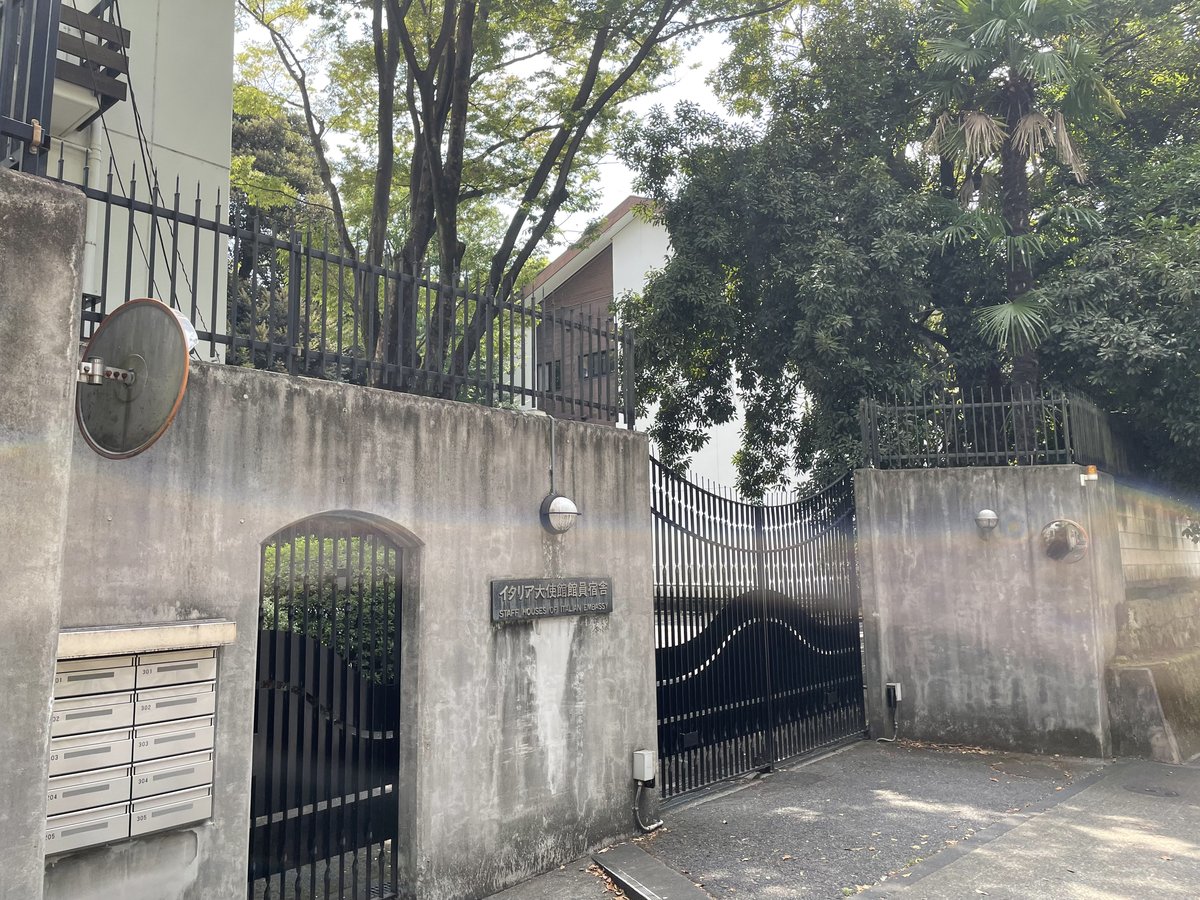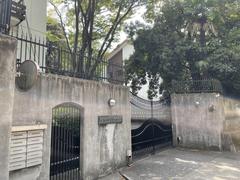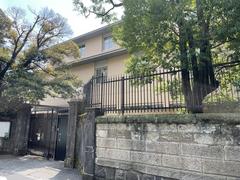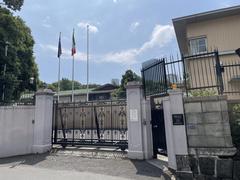
Embassy of Italy in Tokyo: Visiting Hours, Tickets, and Visitor Information
Date: 14/06/2025
Introduction
The Embassy of Italy in Tokyo stands as a distinguished symbol of the enduring relationship between Italy and Japan, intertwining layers of history, culture, and diplomacy in Tokyo’s prestigious Minato ward. Occupying land steeped in Edo-period heritage, the embassy is not only a functioning diplomatic mission but also a vibrant center for cultural engagement and a rare green oasis within the metropolis. Its historic garden, once part of a daimyo estate and now accessible through guided tours, offers an immersive journey into both Japanese and Italian traditions. This guide provides a comprehensive overview of the embassy’s historical and cultural significance, detailed visitor information, accessibility guidance, and recommendations for nearby attractions, ensuring a memorable and enriching experience (ANSA).
Historical Context: From Edo-period Legacy to Diplomatic Bridge
The Edo-period Roots
The site of today’s Italian Embassy was once the residence of the Matsudaira daimyo family during the Edo period (1603–1868), connecting it directly to the intricate political narrative of feudal Japan. The grounds are also linked to the legendary 47 rōnin—a story that epitomizes Japanese ideals of loyalty and honor. Local tradition holds that ten of these samurai met their end within what is now the embassy garden, adding a layer of solemn historic resonance (ANSA).
Transformation and Modern Diplomacy
Following the Meiji Restoration, the property transitioned from feudal residence to a diplomatic site as Japan opened to the West. Formal diplomatic relations between Italy and Japan began in 1866, with the Italian mission moving from Yokohama to Tokyo as the city became Japan’s political center (Wikipedia; iris.unive.it). The embassy’s evolution mirrors the broader story of Japan’s modernization and international engagement.
The Historic Garden: A Living Time Capsule
The embassy’s garden remains a unique and well-preserved example of Edo-period landscaping in central Tokyo, offering a living record of both natural and cultural history. Its botanical treasures include ancient ginkgo biloba trees, camphor trees from the late 19th century, and rare Himalayan cedars. The garden’s minimal external interventions have allowed it to retain its original character, providing a tranquil and authentic glimpse into the city’s past (ANSA).
Archaeological and Academic Insights
Ongoing collaborative research, led by Italian and Japanese academic institutions, combines archaeological studies with virtual reconstructions to deepen understanding of the site’s evolution. This scholarly approach informs the narratives presented during guided tours, enriching the visitor experience with academically grounded insights (IRIAE).
Symbolism and Bilateral Significance
The embassy is a powerful emblem of the dynamic relationship between Italy and Japan. Beyond its role in diplomacy, it has hosted major cultural initiatives and humanitarian collaborations, strengthening ties through shared art, design, and mutual support in times of crisis (Wikipedia; iris.unive.it).
Recent Developments: Opening to the Public
In November 2024, the embassy’s garden was officially opened for public guided tours, a significant move in public diplomacy. These tours, developed in partnership with the Minato municipality and academic experts, narrate the garden’s layered history and ecological importance. The initiative has been met with enthusiastic public interest and plans for expanded educational programs are underway (ANSA).
Visitor Information
Visiting Hours and Tour Reservations
- Guided Garden Tours: Offered on select days, usually between 10:00 AM and 4:00 PM.
- Reservation: Advance online reservation is mandatory due to limited capacity.
- Tickets: Admission is free for guided tours. No general public access outside of scheduled events.
- Building Access: The main embassy building is not open for casual visits; access is limited to official business or special events (SchengenVisaInfo).
Accessibility
- Fully accessible for visitors with mobility challenges; ramps and assistance are available.
- Notify staff in advance for specific accommodation needs (Go Tokyo Accessibility Guide; Accessible Japan).
- Accessible toilets and barrier-free routes are provided.
Security Protocols
- Valid identification and reservation confirmation required for entry.
- Security screenings, including bag checks, are mandatory.
- Photography is restricted; inquire on-site for event-specific guidance.
Getting There
- Location: 2-5-4 Mita, Minato-ku, Tokyo 108-8302, Japan.
- Public Transport: A 10–15 minute walk from Tamachi Station (JR Yamanote Line/Keihin-Tohoku Line) or Mita Station (Toei Mita and Asakusa Lines).
- Parking: Limited; public transport is recommended.
Nearby Attractions
- Tokyo Tower: Iconic city landmark with observation decks.
- Zojoji Temple: Historical Buddhist temple.
- Roppongi Hills and Midtown: Shopping, dining, and cultural complexes.
- Parks: Arisugawa-no-miya Memorial Park and Shiba Park offer green spaces nearby.
Cultural Engagement and Community Activities
Italian Cultural Presence
The embassy is a focal point for Italian cultural programming in Tokyo—hosting exhibitions, concerts, Italian National Day celebrations, and culinary events such as Foodex Japan. It facilitates language education, business networking, and cross-cultural partnerships in art, fashion, and gastronomy (EU-Japan Centre).
Community Events
Public festivals, art exhibitions, and trade fairs are regularly organized to foster Italian-Japanese exchange. Notable events include the Festa della Repubblica and Moda Italia & Shoes from Italy.
Practical Tips for Visiting
- Book tours or appointments in advance.
- Arrive 15 minutes early for security procedures.
- Prepare required documents and identification.
- Dress in smart casual attire.
- Consult the embassy’s website for current schedules and event registration.
Frequently Asked Questions (FAQ)
Q: What are the official visiting hours?
A: Guided garden tours are typically available on select days, 10:00 AM–4:00 PM; check the official website for updates.
Q: Is admission free?
A: Yes, but prior reservation for guided tours is required.
Q: Are guided tours available?
A: Yes, all public visits to the garden are guided.
Q: Is the embassy accessible for people with disabilities?
A: Yes, with prior notification for special assistance.
Q: How do I get there?
A: The embassy is accessible by train (Tamachi or Mita stations) and is situated in Minato ward.
Q: Can I visit the embassy building?
A: Only for official business or during special public events; general visits are limited to the garden via guided tours.
Visual and Media Resources
- Suggested images:
- Embassy exterior: “Embassy of Italy in Tokyo building exterior showcasing Italian-Japanese architectural design”
- Gardens: “Italian and Japanese style gardens at the Embassy of Italy in Tokyo”
- Infographics summarizing visitor tips and accessibility features
Conclusion and Visitor Recommendations
The Embassy of Italy in Tokyo offers a rare blend of diplomatic function, historical depth, and cultural vibrancy. Its Edo-period garden, now open for guided public tours, provides a serene retreat and a living link to a pivotal era in Japanese history. As a venue for cultural events and as a bridge between Italy and Japan, the embassy embodies a harmonious blend of tradition and innovation. Visitors are encouraged to explore both the embassy’s unique offerings and the surrounding Minato ward for a comprehensive Tokyo experience. Prior planning, attention to accessibility, and participation in public events will maximize your visit (ANSA; IRIAE).
Useful Links
- Embassy of Italy Tokyo Official Website
- ANSA Embassy Garden Article
- ArchDaily Embassy Architecture
- Italy–Japan Relations: Wikipedia
- University of Venice Italy–Japan Research
- Embassy Garden Project: IRIAE
- EU-Japan Centre Italian Fashion and Food
- Tokyo Pocket Guide
- Live Japan Accommodation Guide
- PlanetWare Tokyo Attractions


































































































































































































































